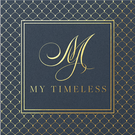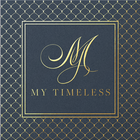How to identify antique / Vintage jewelry
Using Hallmarks to Identify Jewelry:
Jewelry marks in France date back even earlier, with known examples first seen in the 13th century. An important year to know if you’re collecting French antique jewelry is the year 1797, when it was required to have a maker’s mark framed within a lozenge, a diamond-shaped charge that is often placed on the field of a shield.
 Eagle Head (France assay Gold marks)
Eagle Head (France assay Gold marks)
Hallmarking in Great Britain has had a long history, dating back to the 14th century. Today’s standards are regulated by the Hallmarking Act of 1973. Any piece of British jewelry made prior to 1999 was required to include what is known as a date letter stamp, a letter corresponding to the year that it was registered with the assay office. Assay offices are official governmental establishments who are tasked to assay, or test, the purity of jewelry metals and in some cases, to hallmark the jewelry.
Maker’s Marks
Maker’s marks may include logos, trademarks, company names, and designer signatures to specify who made the jewelry. Iconic jewelry maker Tiffany & Co., for example, has featured several maker’s marks throughout their 179-year history, including “Tiffany & Co.” and “T & Co.” Special edition Tiffany & Co. jewelry collections created by designers Frank Gehry, Paloma Picasso, Jean Schlumberger, and Elsa Peretti also bear their respective designers’ signatures.
Van Cleef & Arpetls will also include a serial number accompanying the brand trademark. Depending on the era of the piece, the maker’s mark either reads “Van Cleef & Arpels” or the letters “VCA.”

